Middle Eastern Halva Recipe
Halva is a traditional Middle Eastern confection made with only 5 simple ingredients. Tahini, sugar, cardamom, vanilla, and pistachios are combined to create an irresistibly sweet, nutty, and velvety smooth dessert. Similar to Western fudge in texture, whip up a batch for festive occasions or anytime you want to satisfy your sweet tooth.
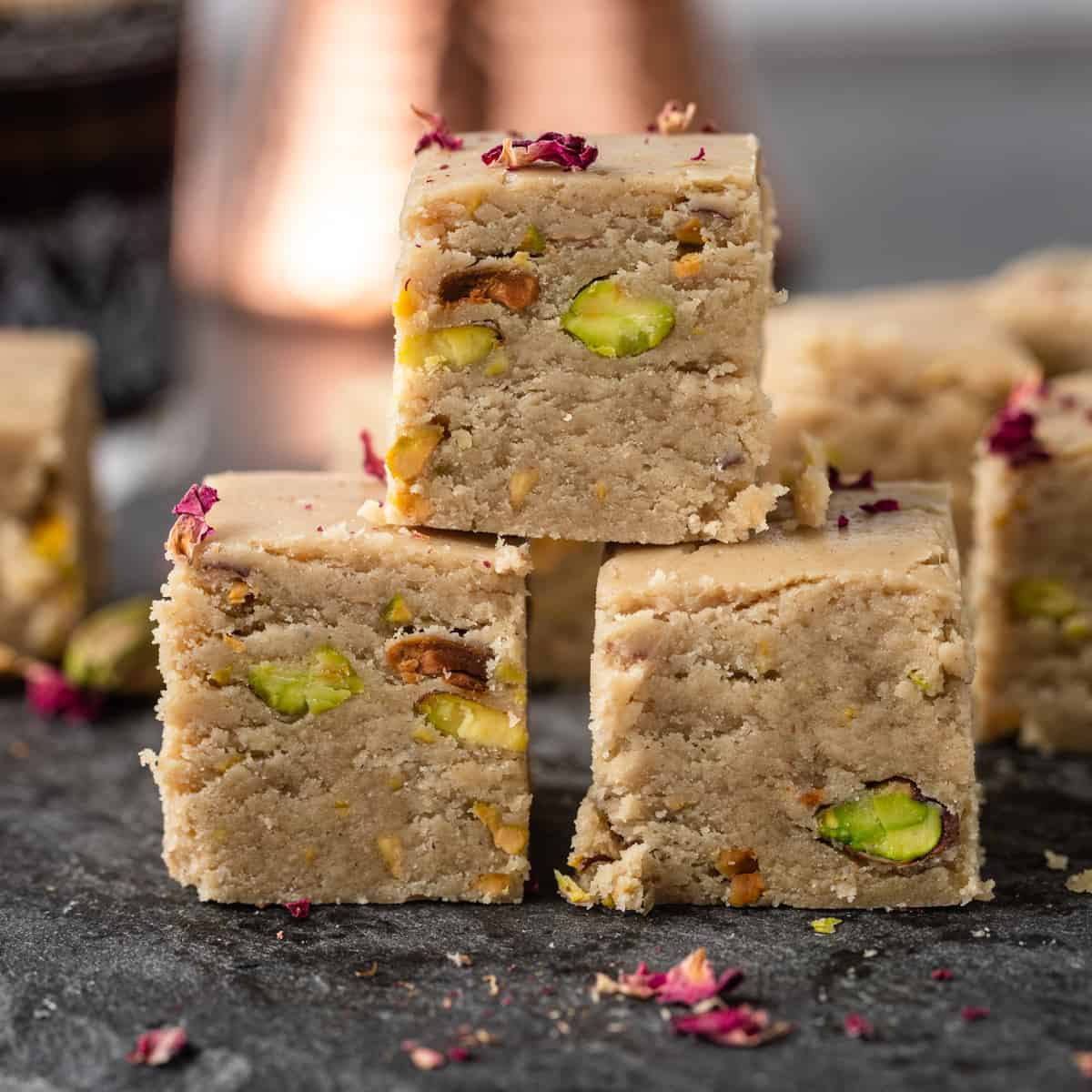
I first had halva in Turkey and later in Egypt and both times were memorable! Halva, also spelled helva, halwa, or halvah, is a confectionary treasure from the rich world of Middle Eastern Cuisine. It is rich, sweet, and an unparalleled luxurious treat, perfect to make around the holidays or any time you want to offer a delectable handmade gift to your friends and family.
I think you will be delighted with the simplicity of this halva recipe. As indulgent and exotic as the dessert may be, it only requires 5 simple ingredients and about 20 minutes of preparation time. It does require 24 hours to properly set, though, so just be sure to plan ahead.
Table of Contents
For more mouthwatering dessert recipes with tahini, check out my Fudgy Tahini Brownies, Tahini Chocolate Bark, and this Egyptian Semolina Cake.
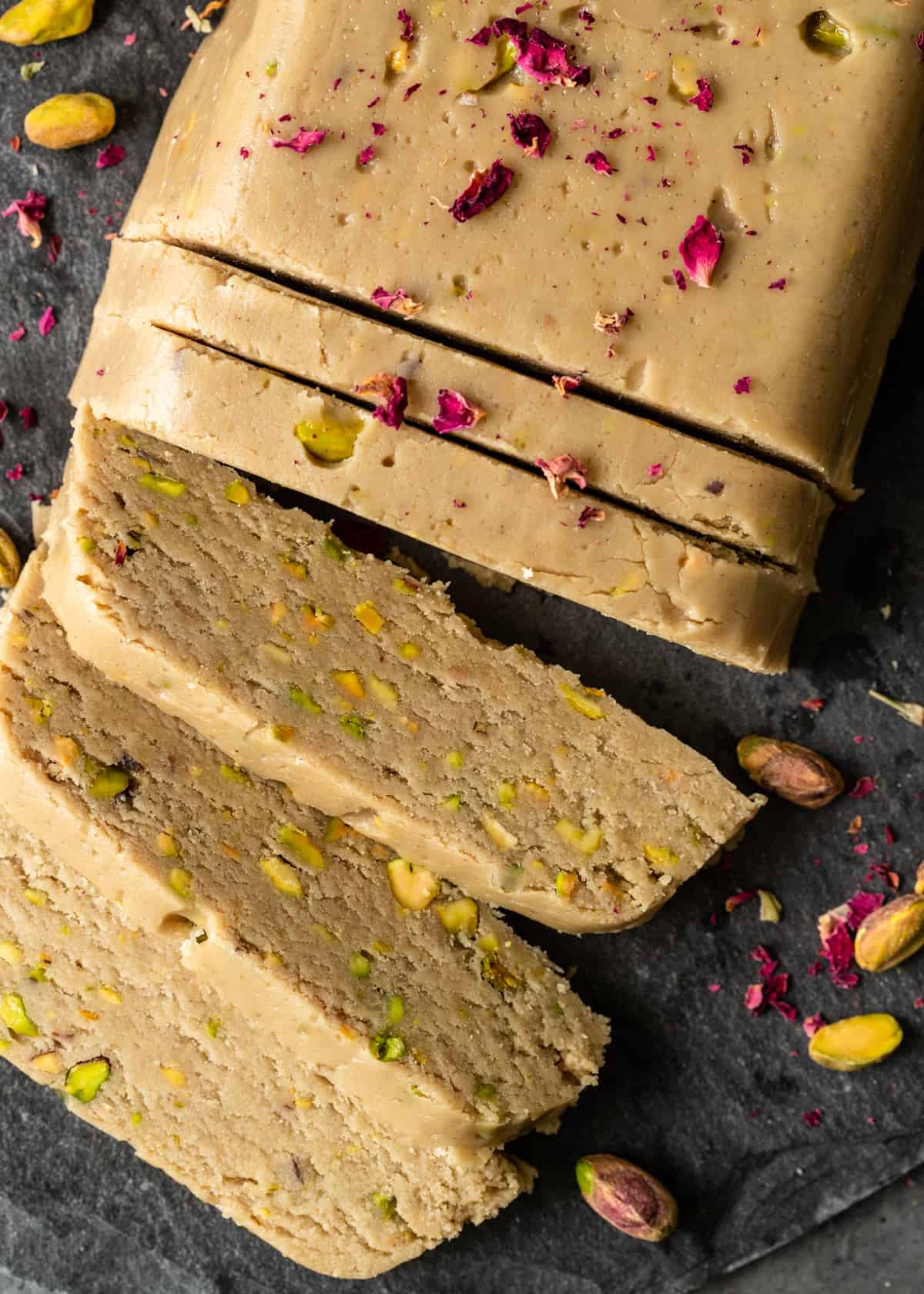
- Tahini – This pureed paste of sesame seeds forms the base of this recipe. It is earthy and nutty with a smooth, velvety texture. Look for tahini either beside the peanut and other nut butters or in the international aisle at your supermarket.
- Sugar – Sweetens the recipe and adds a sticky texture that helps hold the recipe together.
- Cardamom – This deliciously complex spice adds a smoky-sweet warmth with hints of mint and lemon.
- Water – Essential for melting the sugar into a sweet, spicy syrup.
- Vanilla – Vanilla adds a harmonizing sweetness and touch of earthiness. If desired, you can change the flavor of your halva recipe by substituting orange blossom or rose water.
- Pistachios – Make sure your pistachios have been roasted, shelled, and chopped before adding them to the mix. If needed, feel free to try chopped almonds, cashews, or another nut instead.
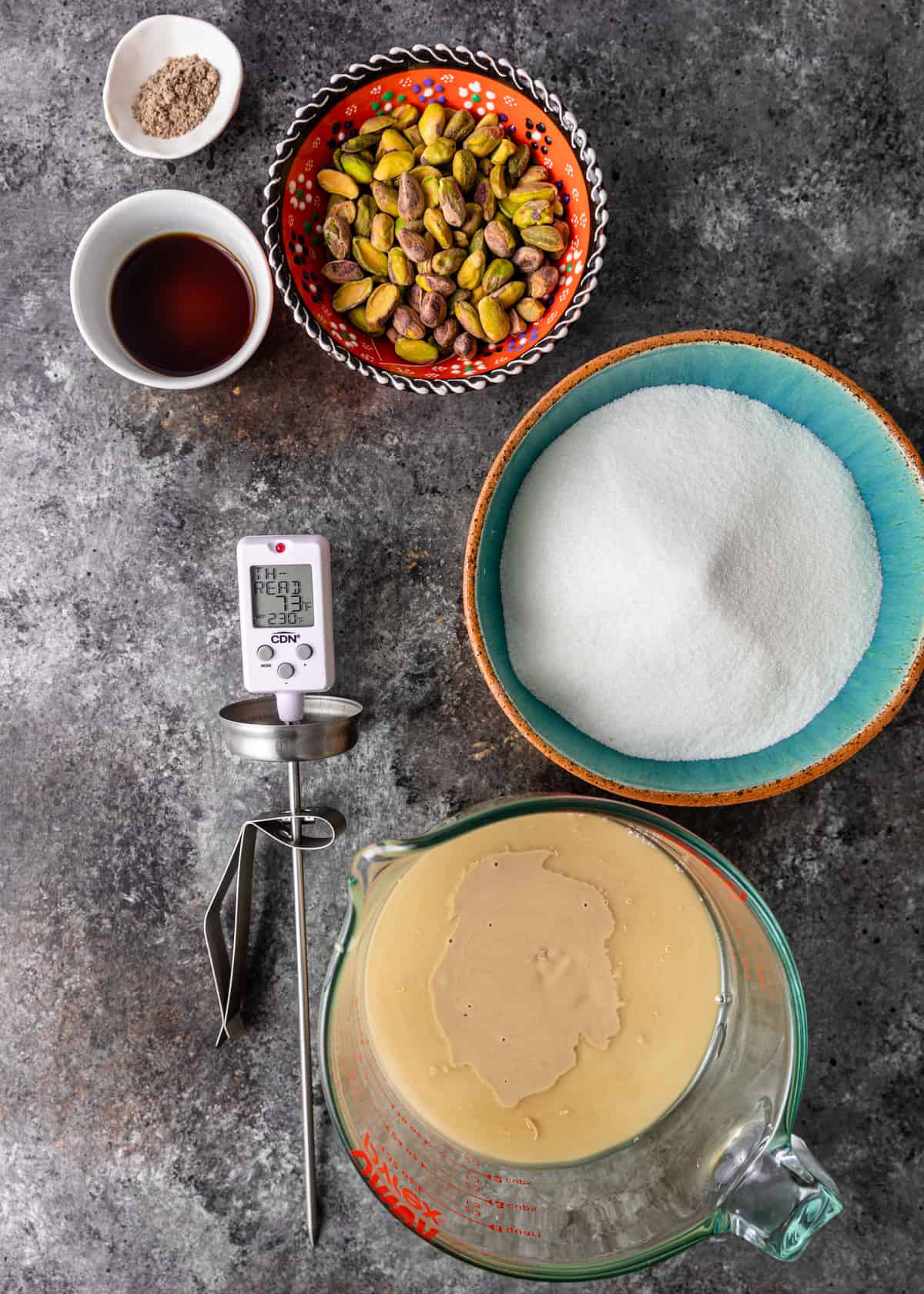
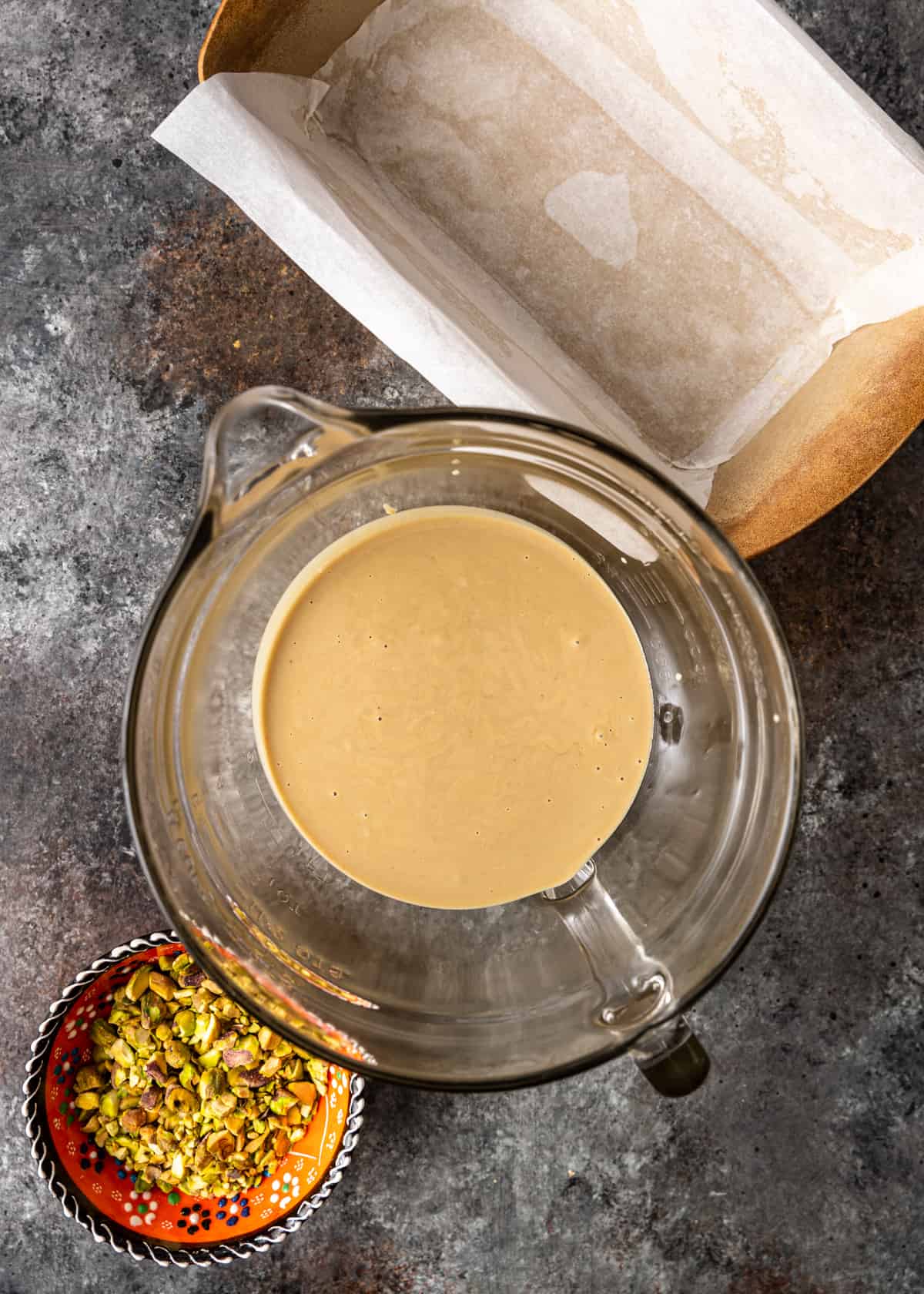
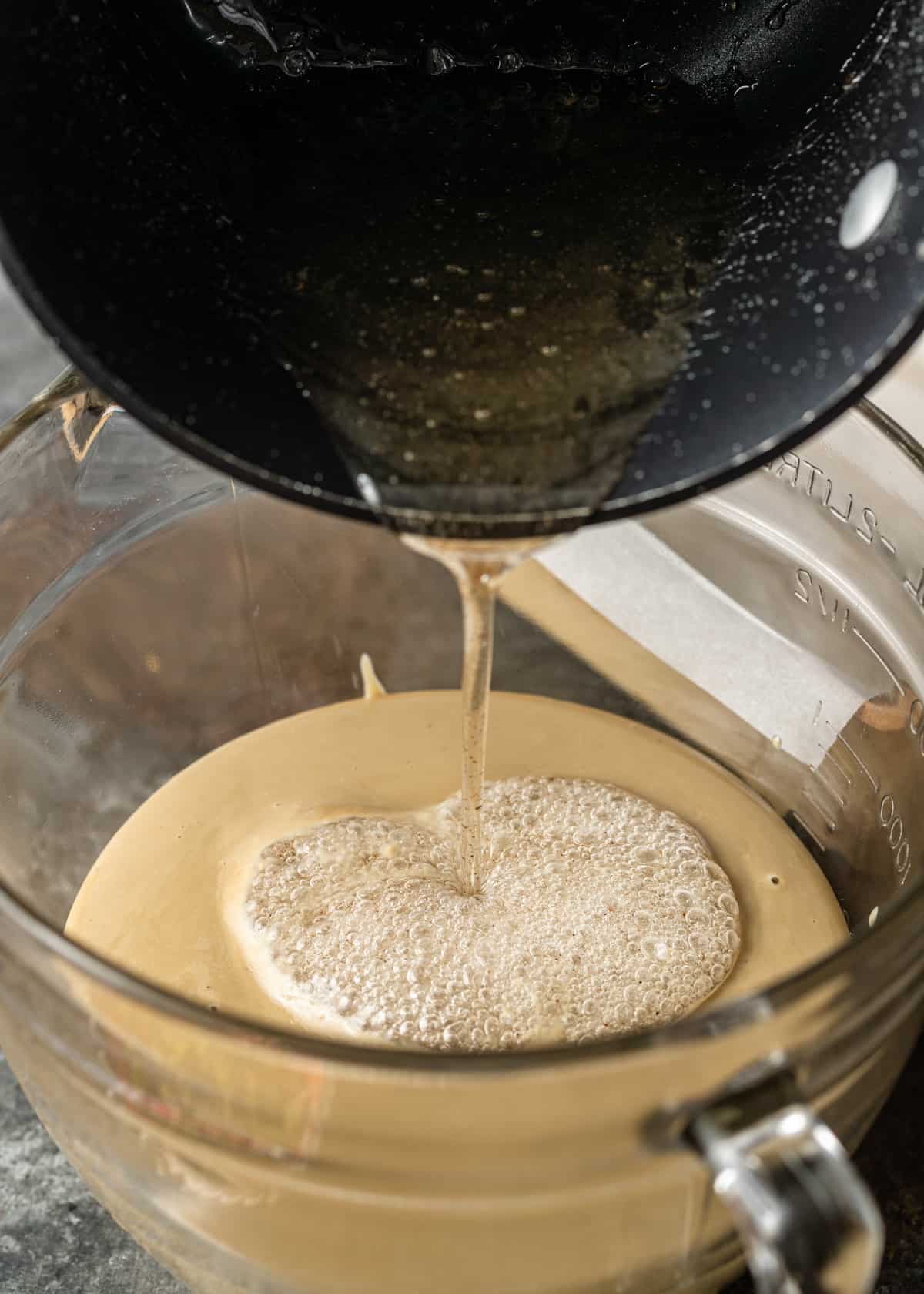
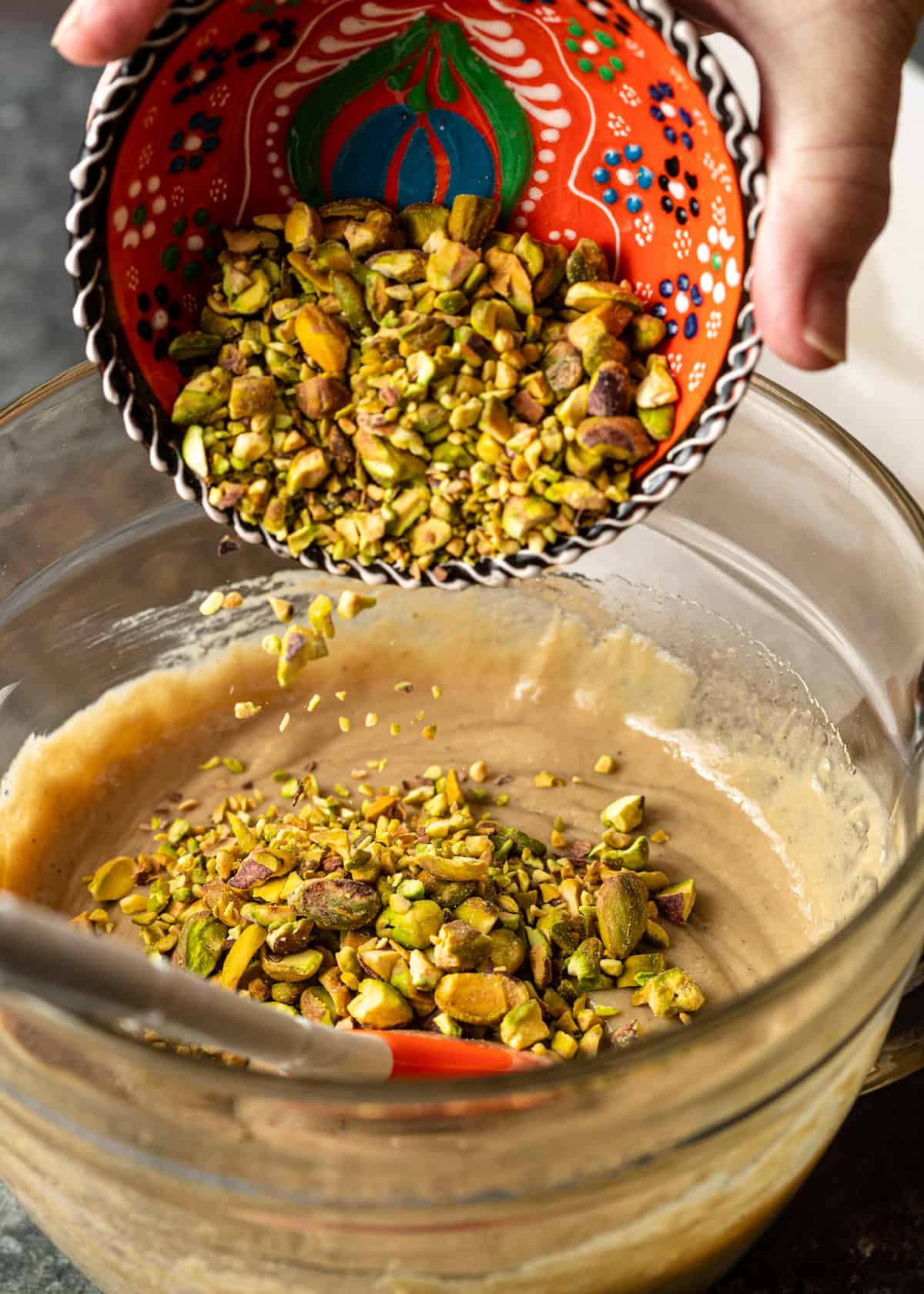
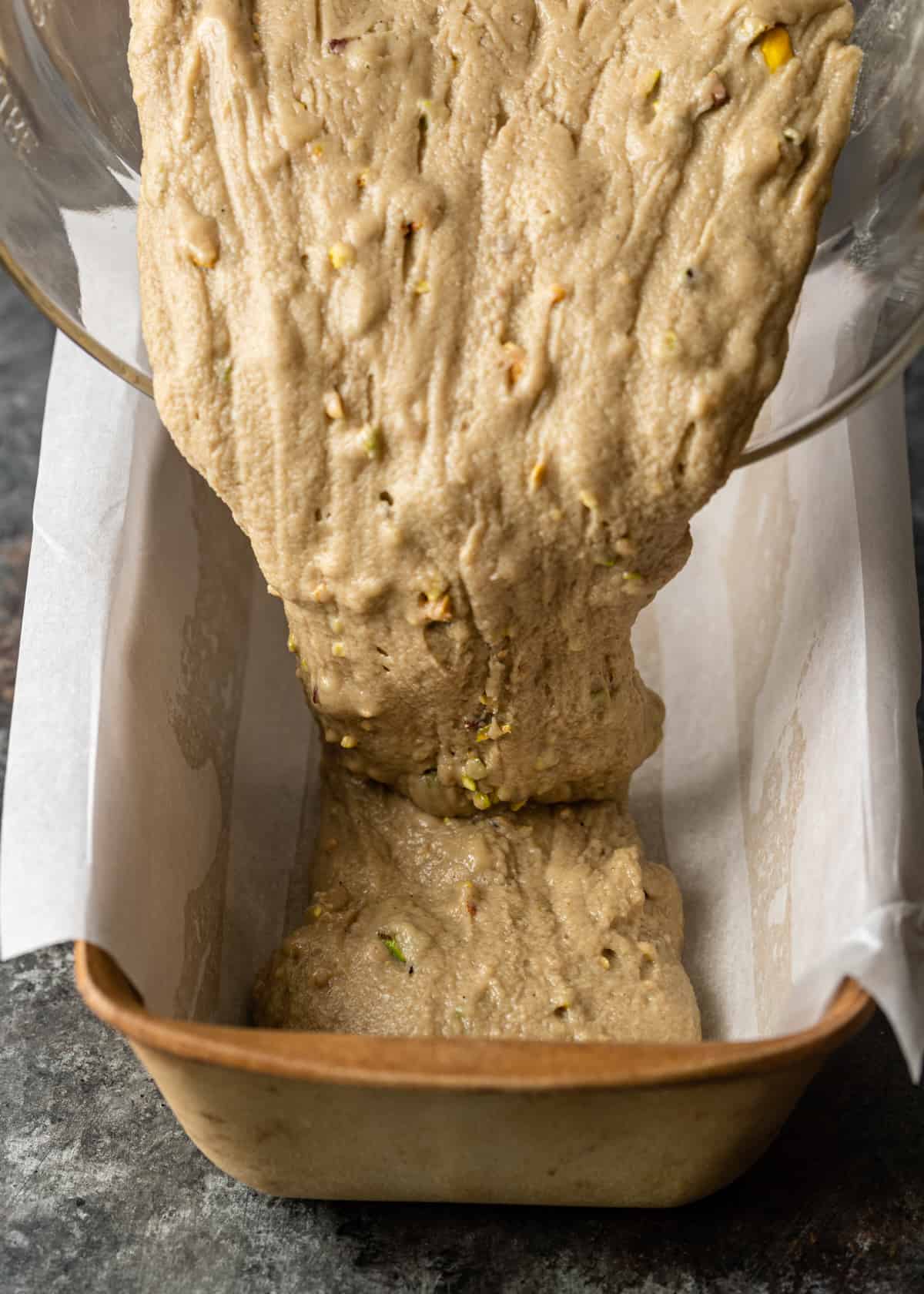
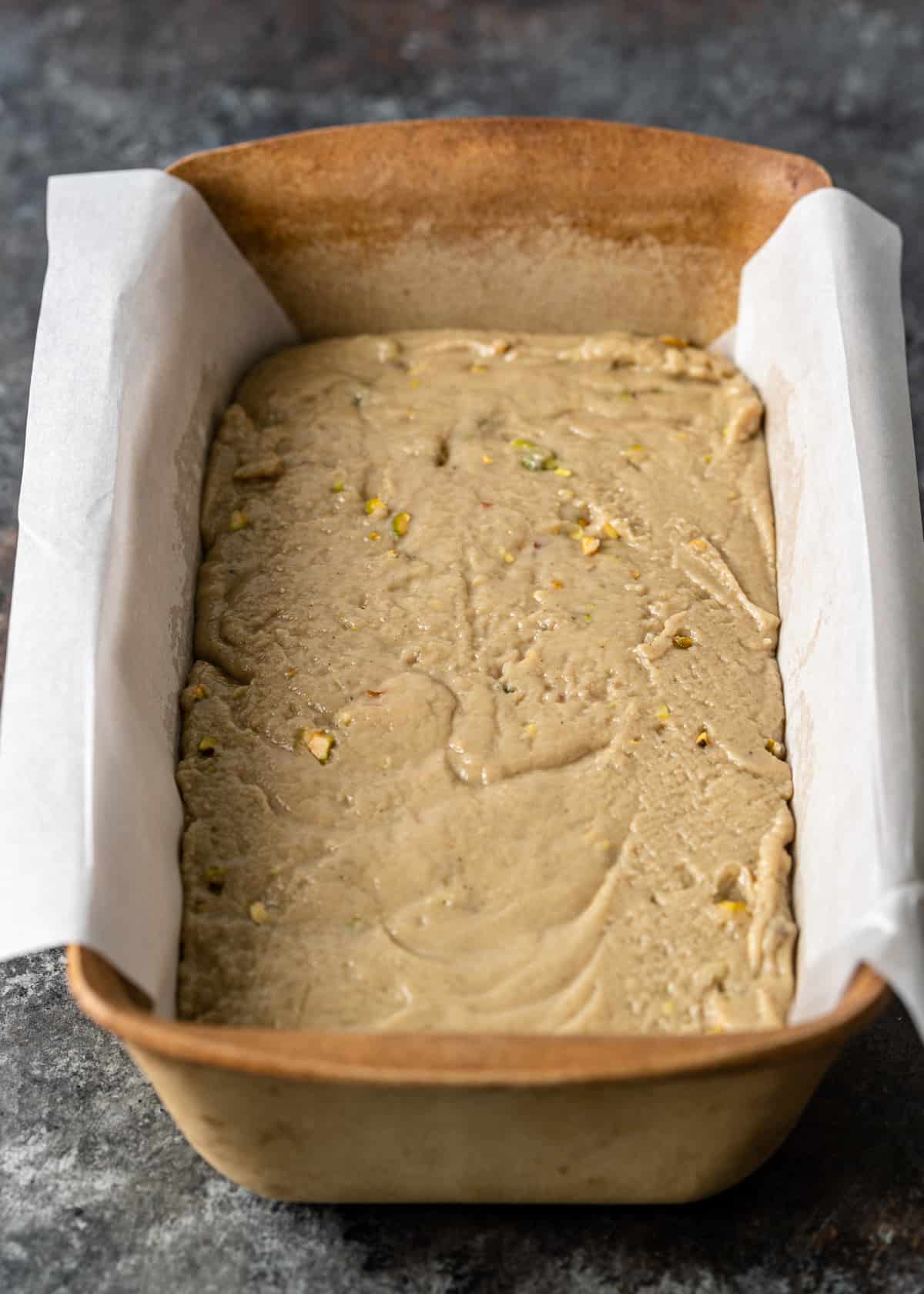
- Prepare the Pan. Spray a loaf pan with nonstick cooking spray and then line it with parchment paper. Use enough paper to leave an overhang to make lifting easier. Set aside.
- Blend Tahini. Combine the tahini and vanilla in a heat-proof bowl and set aside.
- Make the Syrup. Combine the sugar, water, and cardamom in a small saucepan over low heat. Stirring with a wooden spoon, cook the mixture for about 5 minutes until the sugar has completely dissolved.
- Bring to a Boil. Turn the range up to medium heat and bring the syrup to a boil. Using a candy thermometer to check, cook until the mixture reaches 250 degrees F. Remove from heat.
- Combine All Ingredients. Carefully pour the sugar mixture into the bowl with the tahini and vanilla. Use a spatula or wooden spoon to vigorously stir until all the ingredients are fully blended. Don’t over over mix this! Now, toss in the pistachios and stir to incorporate. You should expect the helva to turn glossy and thick.
- Transfer to Cool. Pour the warm candy mixture into the prepared loaf pan, cover with plastic wrap, and place in the refrigerator for around 24 hours for it to fully set. Alternatively, you can divide the halva into mini muffin tins or candy molds for a festive touch.
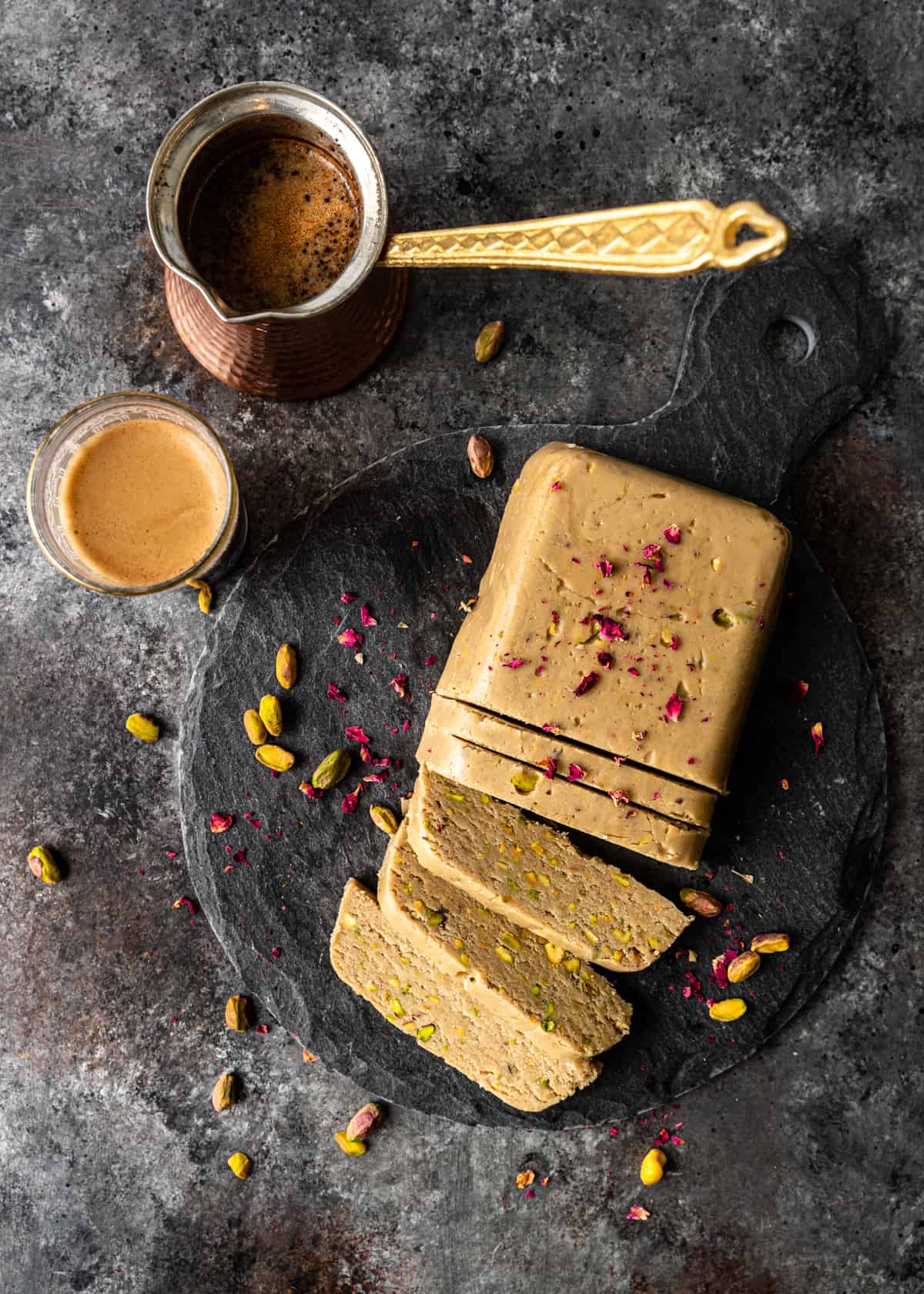
Cooking Sugar Syrup
As a sugar syrup is cooked, water boils away, the sugar concentration increases, and the temperature rises. The highest temperature that the sugar syrup reaches tells you what the syrup will be like when it cools. In fact, that’s how each of the temperature stages is named. We need this to hit 250°F, which is between Firm Ball Stage and Hard Ball Stage like when making caramels, nougat, marshmallows.
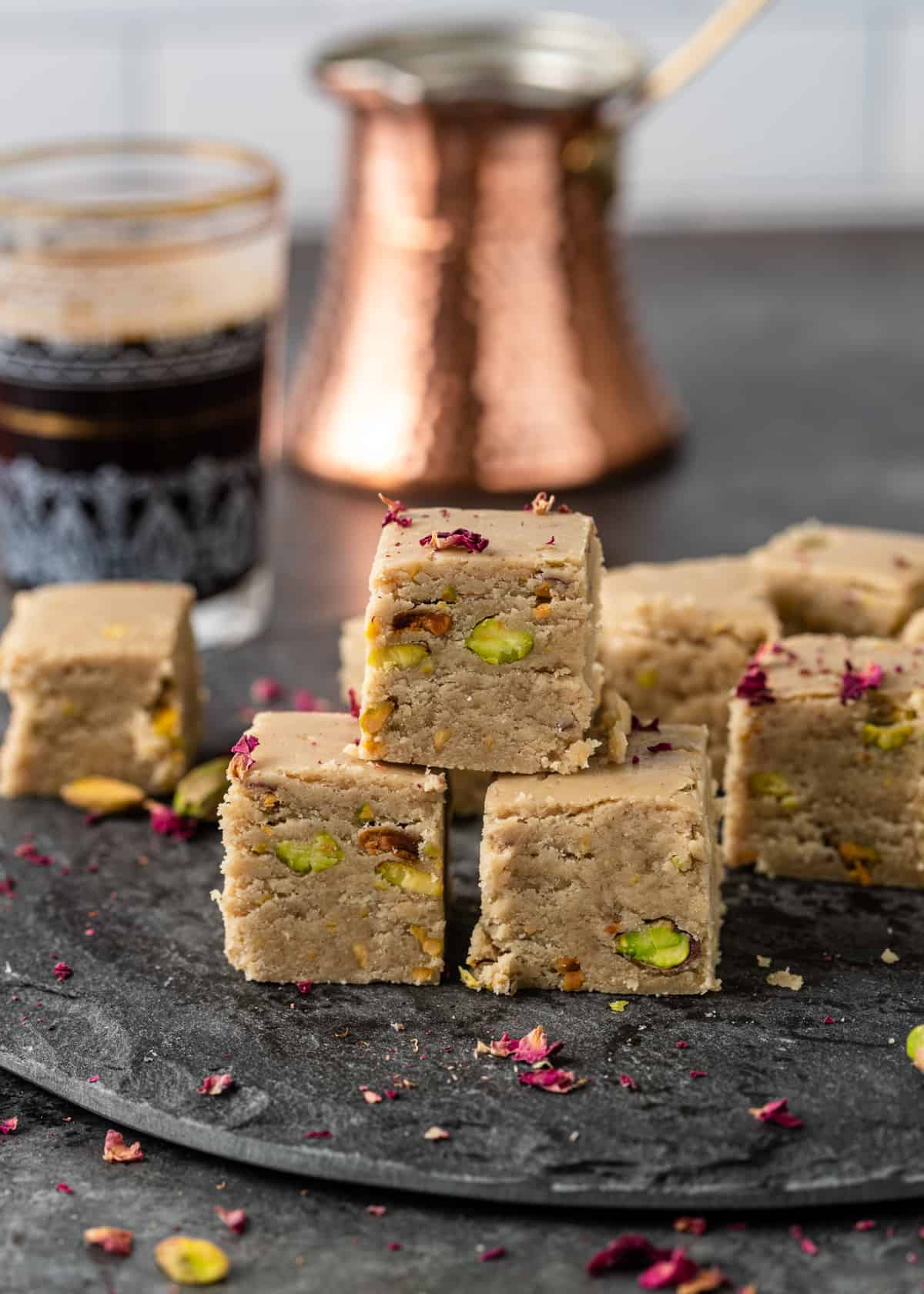
The earliest written accounts of a halva recipe appear all the way back in the 7th century in Persia, which is modern-day Iran. This first mention was made from mashed dates and milk.
The terms halva, helva, halwa, or halvah gained popularity and, by the 9th century, were used to describe a number of different sweets.
The sesame-based confection we make in this halva recipe started showing up in cookbooks in the 13th century.
Halva is traditionally enjoyed in a number of ways. As dessert, it is often served by itself or accompanied with tea or coffee.
It is particularly nice to serve as part of a holiday or potluck platter with a variety of nuts and fruits. And on that note, a beautifully packaged batch of halva makes a marvelous gift!
The fun doesn’t stop there, though. Some cultures use helva as a sweet spread for toast while others break it up and sprinkle it on ice cream. You really can’t go wrong!
When kept in a cool, dry place, in an airtight container, homemade halva will stay fresh for several weeks, even without refrigeration.
However, if you live in a warmer climate or simply want to extend the shelf life further, feel free to store it in the refrigerator for 4-6 months. If you do, make sure it is in a truly airtight container to avoid unwanted flavors making their way in. The texture will be affected some with refrigeration, but you can always bring your goodies to room temperature before diving in.
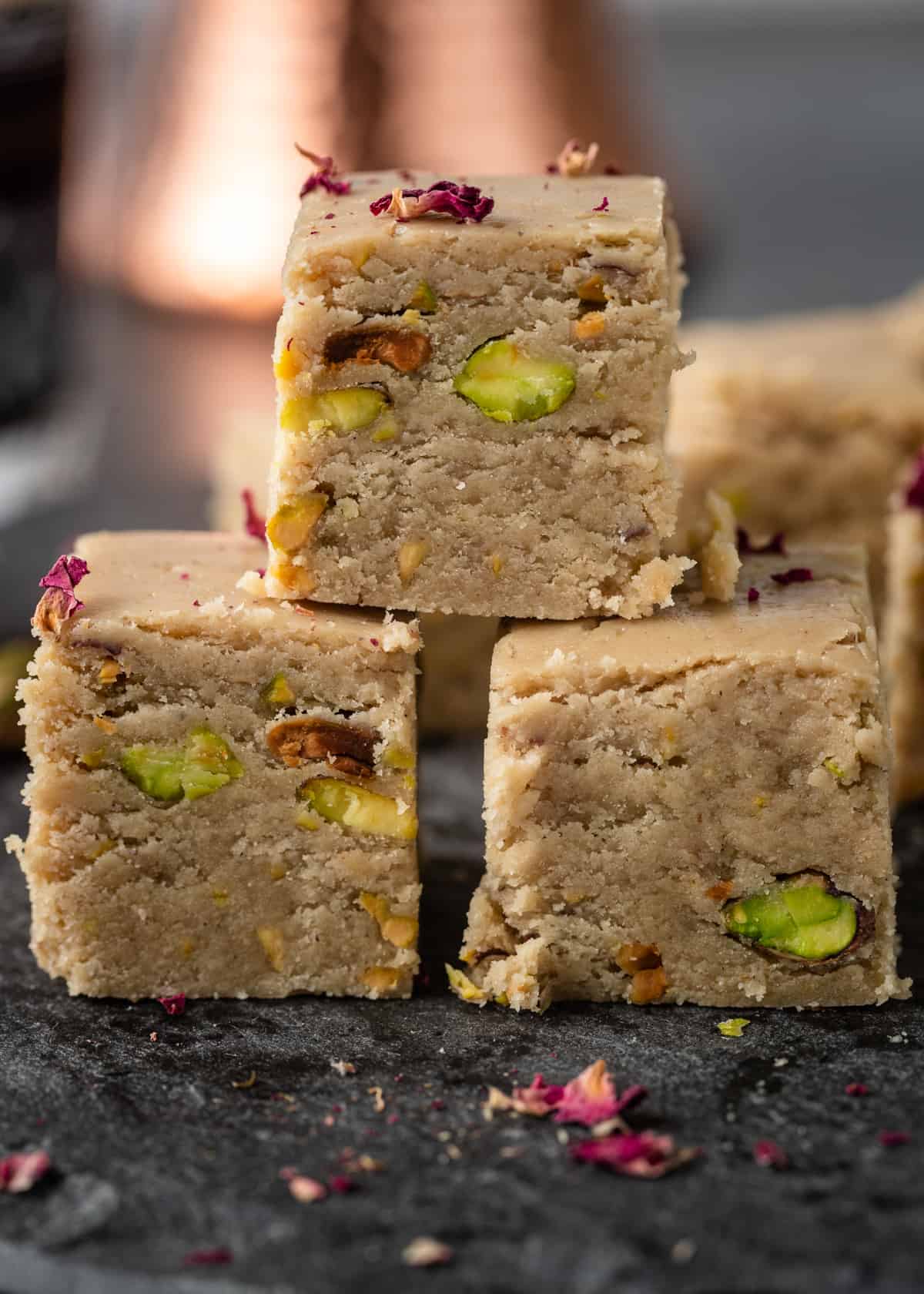
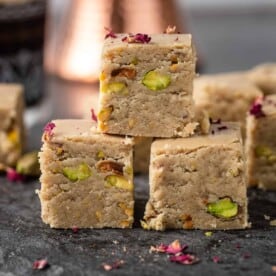
Middle Eastern Halva Recipe
Ingredients
Instructions
- Coat a loaf pan with a nonstick cooking spray and line with parchment paper with a little overhang for easier lifting. Set aside.
- In a heat-proof bowl, combine the tahini and vanilla. Set aside.
- In a small saucepan over low heat, bring the sugar, cardamom and water to a simmer. Cook until sugar is completely dissolved, stir using wooden spoon, about 5 minutes.
- Increase heat to medium and bring to a boil. Continue to cook until the mixture reaches 250°F on a candy thermometer.
- Remove from heat, and slowly pour syrup into the bowl of tahini, stirring vigorously with spatula or a wooden spoon to thoroughly incorporate. Add pistachios, and stir to combine. Halva will turn glossy and thick.
- Pour into the prepared loaf pan and smooth the top (See Note 2). Cover with plastic wrap and refrigerate until set (24 hours). Slice halva while cold, but serve at room temperature.
Video
Notes
- I often times use orange or rose water as a substitute for the vanilla extract.
- You can use a 10-inch round dish, mini muffin pans or pour into a tub to mold the halva into desired shapes.
Nutrition
The information shown is an estimate provided by an online nutrition calculator. It should not be considered a substitute for a professional nutritionist’s advice.
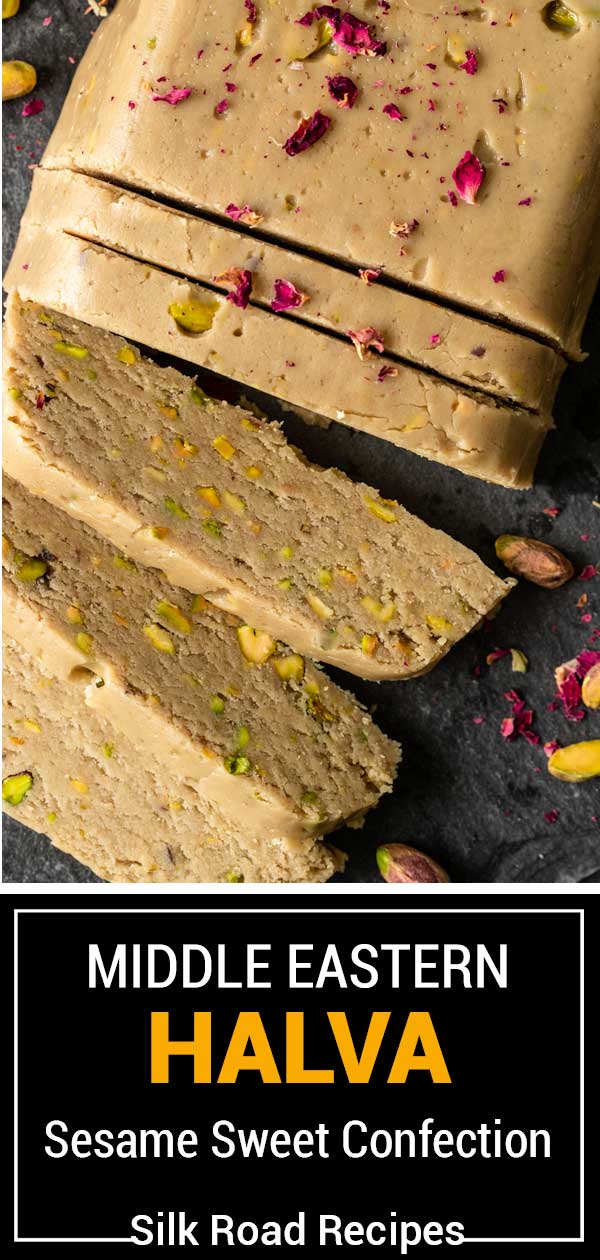
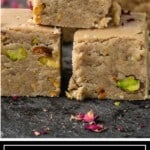
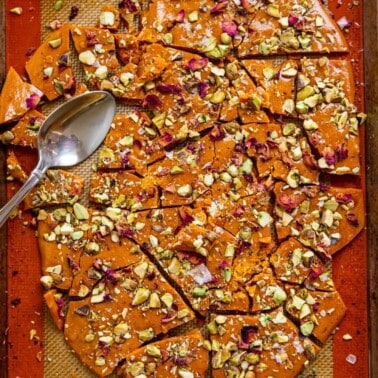
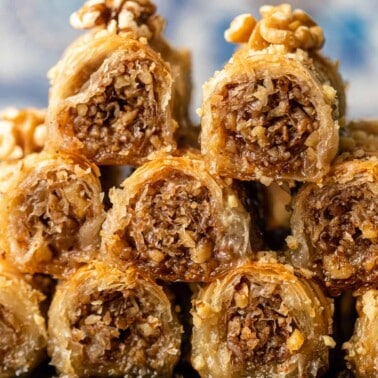
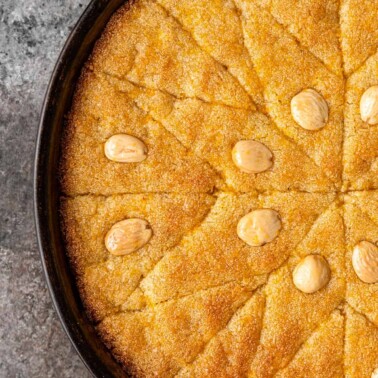
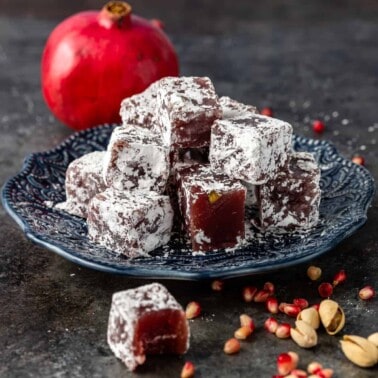








I met a friend who is Egyptian and started cooking meals and desserts, learning on Pinterest how to make things that were authentic to his culture. I also make Italian biscotti as a hobby and now I have a cottage B license to sell within my County in California… the first time I made halva the sugar water started crystallizing and the halva got really rock hard, so my friend recommended I put one tablespoon of lime juice in the water before it boiled so that it would keep the sugar from crystallizing… that definitely helped, and I love it, so thank you for your wonderful video!
Much appreciated Dr Bordonaro. Enjoy! 🙂
Hi Kevin, May I sub dates or dried fruits for nuts in halva? Cannot digest nuts which is frustrating with many ethnic cuisines.Thanks,Beth
Definitely Beth.
Hi Kevin.
This recipe looks wonderful!
Should salted or unsalted pistachios be used?
Thanks!
Unsalted, but its your preference Roberta.
I made this per the instructions but it’s a bit soft. If I keep it chilled in the refrigerator it’s fine though. Any suggestions to keep it more firm?
All I have to say yum
This halva looks amazing! I’ve never tried to make it at home and I wonder if this version will develop the flaky “threads” that make halva that comes in those big wheels in the Middle East so distinctly tasty… have you been able to see what happens to it over time? Or is it more nut-buttery in texture? Anyway, thank you for the recipe… gorgeous photos, too! 🙂
Nut buttery in texture Maysie. As for the flaky threads, I have not seen or experienced that version.